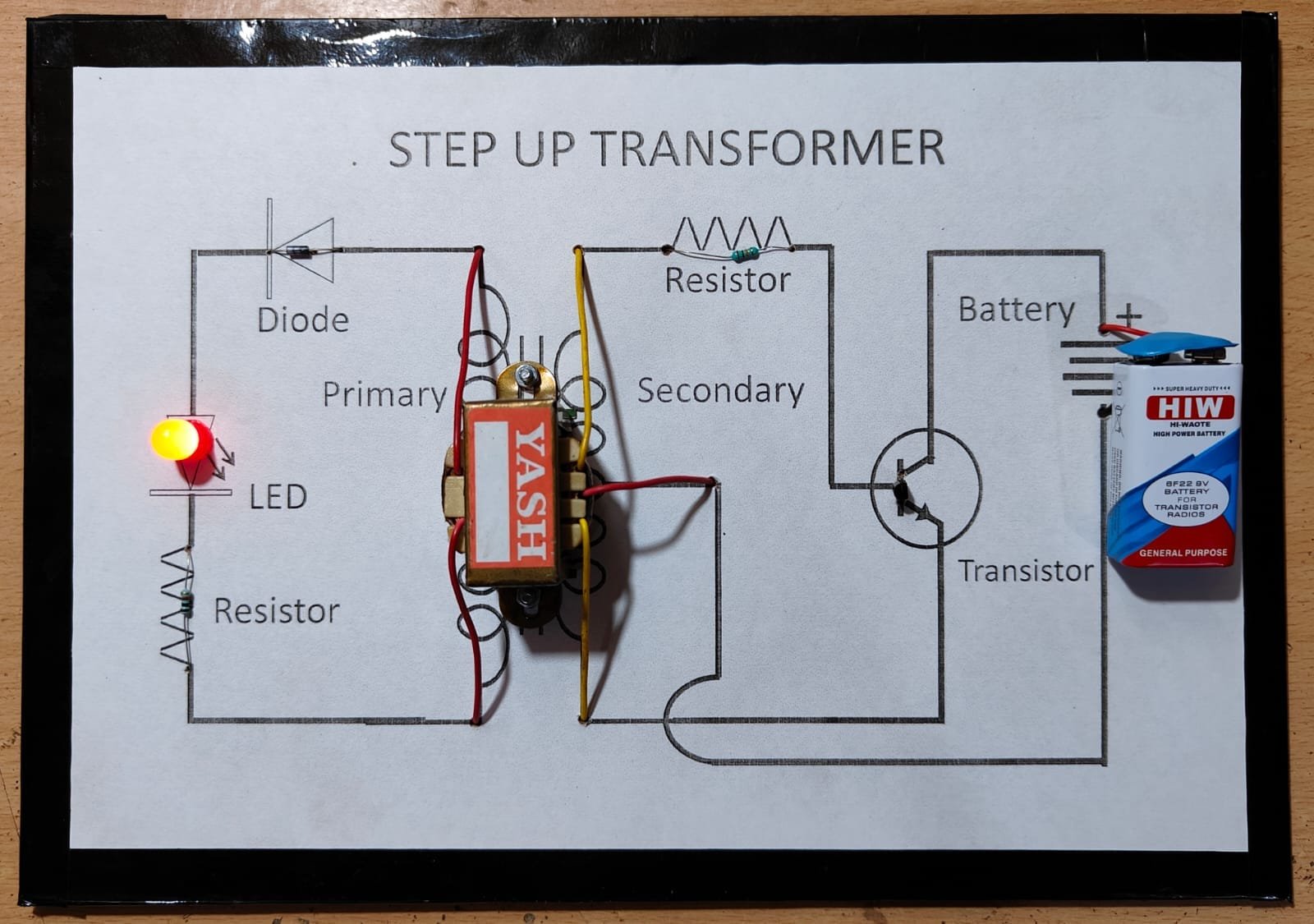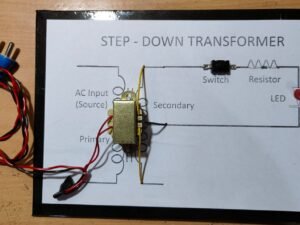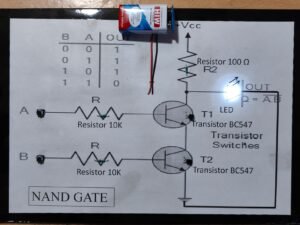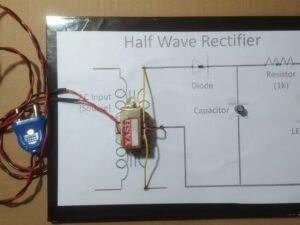Step Up Transformer
3 in stock
A Step-Up Transformer increases voltage from a lower to a higher level by using two coils: the primary and secondary. The secondary coil has more turns, producing a higher output voltage. This project demonstrates its role in power transmission, reducing energy losses, and applications in electrical devices like microwaves and X-rays.
₹442.50 ₹767.00 (Incl. GST)
3 in stock
Step Up Transformer
A step-up transformer is an electrical device that increases voltage from its primary to its secondary winding, operating on the principle of electromagnetic induction. Incorporating components such as resistors, batteries, diodes, and transistors can enhance its functionality in various applications.
Components Used:
- Transformer: Transfers electrical energy between two or more circuits through electromagnetic induction, stepping up the voltage as required.
- Resistor: Limits or regulates the flow of electrical current in a circuit.
- Battery: Provides a source of direct current (DC) electrical energy.
- Diode: Allows current to flow in one direction only, used for rectification and protection.
- Transistor: Amplifies or switches electronic signals and electrical power.
Working Principle:
In a typical application, the battery supplies DC power, which is converted to alternating current (AC) using an oscillator circuit involving transistors. This AC is then fed into the primary winding of the step-up transformer. According to Faraday’s Law of Electromagnetic Induction, a changing magnetic field within the transformer induces a higher voltage in the secondary winding, proportional to the turns ratio. Diodes are employed to rectify the output, converting it back to DC if necessary, while resistors control current flow to protect components and ensure stable operation.
Applications:
- Power Supply Design: Used in DC-DC boost converters to power devices requiring higher operating voltages than the available supply.
- Renewable Energy Systems: In photovoltaic systems, step-up transformers elevate the voltage from solar panels to match the grid or charge higher voltage batteries.
- Telecommunications: Employed in signal transmission to amplify voltage levels for long-distance communication.
Advantages:
- Efficiency: Step-up transformers facilitate efficient long-distance power transmission by increasing voltage and reducing current, thereby minimizing resistive losses.
- Versatility: The integration of components like transistors and diodes allows for the design of circuits that can adapt to various input sources and output requirements.
- Cost-Effectiveness: Utilizing readily available components makes these systems economical for a wide range of applications.
Limitations:
- Complexity: Designing circuits with multiple components requires careful consideration to ensure proper functionality and safety.
- Size Constraints: Incorporating additional components can increase the overall size of the system, which may be a limitation in space-constrained applications.
- Heat Dissipation: Higher power levels can lead to increased heat generation, necessitating adequate cooling mechanisms to prevent component failure.
Conclusion:
Integrating a step-up transformer with components like resistors, batteries, diodes, and transistors enables the development of versatile and efficient circuits for numerous practical applications, from power supplies to communication systems. However, careful design considerations must be taken into account to address potential limitations such as complexity, size constraints, and heat dissipation.
You may also like…
-
B.Tech Diploma Mini Projects
Step Down Transformer
A Step-Down Transformer reduces high voltage to a lower level using two coils: the primary and secondary. The secondary coil has fewer turns, producing a lower output voltage. This project demonstrates its role in power distribution, delivering safe voltage for homes and devices like chargers, emphasizing energy conversion and electromagnetic principles.
SKU: Step Down Transformer






